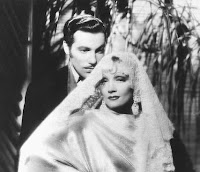A landmark film of the horror genre, Rosemary's Baby (1968) also marked Roman Polanski's directorial debut in the US. The film, a runaway hit on release, was the prototype that inspired the onslaught of big-budget "A" horror films that followed: The Exorcist, The Omen, etc.
In the tradition of Hitchcock, Polanski achieves his effects with little explicit violence but with maximum finesse. Like Hitchcock, Polanski assiduously maneuvers the emotions of his audience. Drawn into Rosemary's point of view and her growing alarm, the viewer becomes ever more aware that something is amiss but, like Rosemary, doesn't grasp exactly what has happened until the final scenes.
This suspense is propelled by a careful ambiguity that implies Rosemary's terror may have a rational explanation (women do have difficult pregnancies), that her fears may be her own paranoia (though related to an infamous Satanist, her neighbors could just be a pair of elderly oddballs). On the other hand, the movement of plot and action make it difficult for the viewer to simply write off Rosemary's anguish. Equally ambiguous throughout much of the film are the majority of the characters. While Rosemary remains constant as the innocent young wife, those around her are more enigmatic - from her ambitious actor husband and her intrusive neighbors to her wise and kindly old doctor. Ironically, several of the most villainous characters are also the most comically eccentric.
The clever intermingling of suspense with humor is one of the film's distinctive qualities. A few unforgettable scenes: Rosemary (Mia Farrow) and her husband Guy (John Cassavetes) are dining with her friend Hutch (Maurice Evans) who describes the Bramford building's ghoulish history (including a pair of sisters who devoured children) as he carves lamb at table...a shocking suicide scene in front of the Bramford simultaneously introduces the Castevets: Minnie (Ruth Gordon), dressed and made up in the manner of a Christmas tree, and Roman (Sidney Blackmer), clad as though vaudeville was alive and well...and finally, when Rosemary sees her baby for the first time she, uncomprehending, shrieks, "What have you done to its eyes?" Roman Castevet responds, "He has his father's eyes"...
Another of the film's delights is its painstaking recreation of the specific time in which it was set, late 1965 to mid-1966. Costume designer Anthea Sylbert captured that timeframe's contemporary look with Rosemary's short shift dresses (some with peter pan collars), a long and luxurious plaid skirt, red chiffon lounging pajamas. Rosemary has her blunt-cut pageboy snipped short by Vidal Sassoon, she relaxes at home reading Sammy Davis, Jr.'s book Yes, I Can, the Pope's visit to New York is glimpsed on TV, and Time Magazine's famous "Is God Dead?" cover is shown on a waiting room table.
 |
| The Dakota |




































